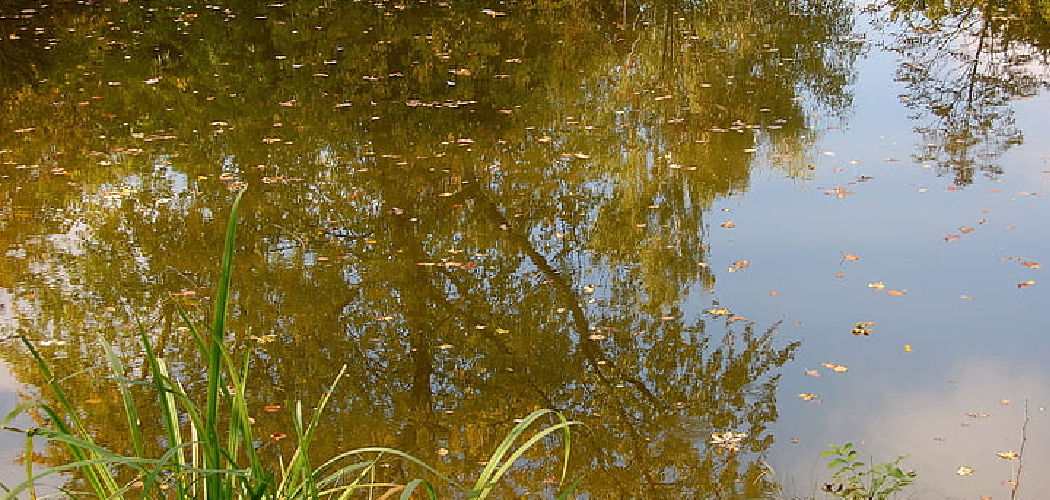Do you own a mixed-habitat pond that’s been taken over by murky muck and an overabundance of algae? If so, you’re probably looking for a solution to get your water body back in balance. Here, we will provide tips for how to clear a muddy pond, from evaluating the cause of the problem to choosing appropriate materials and techniques for restoring clarity. With step-by-step guidance and insight into best practices, you can create a healthier aquatic environment with visible results no matter what type or size of your pond may be!
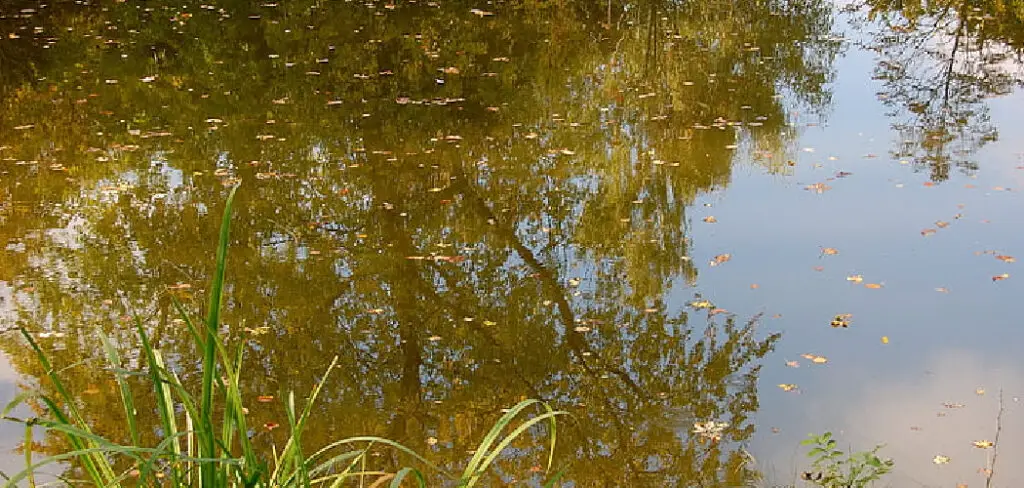
Ponds provide a beautiful, peaceful addition to your outdoor space, but they can quickly become murky and difficult to maintain. If you’re dealing with muddy water or excessive algae growth in your pond, don’t despair—there are plenty of simple steps you can take to restore it back to its former glory! In this blog post, we’ll show you how to assess the situation and then walk through a few easy techniques for clearing up your muddy pond. Read on for all the tips and tricks you need!
Why Do Need to Clear a Muddy Pond?
There are many reasons why you may want to clear a muddy pond. Such as:
1. Improved Water Quality
Muddy ponds are often murky and low in oxygen, making it difficult for fish and other aquatic life to survive. By clearing the pond of sediment and other pollutants, you can improve overall water clarity and quality.
2. Better Aesthetics
A clear pond is more visually appealing than one blanketed with mud, algae or other debris. After you clear a pond, the water can be filled with lush aquatic plants and colorful fish that will bring your garden to life.
3. Easier Maintenance
When it comes time for maintenance such as cleaning filters or removing debris from the pond, a clear pond is much easier to manage than one covered in mud. The visibility of a muddy pond makes it difficult to assess the health of your pond, making maintenance more difficult.
4. Safer Environment
Muddy ponds can be dangerous for fish and other aquatic life, especially if the water is low in oxygen. By clearing out mud and debris, you can provide a safer habitat for your pond’s inhabitants.
18 Tips About How to Clear a Muddy Pond
1. Add Aeration
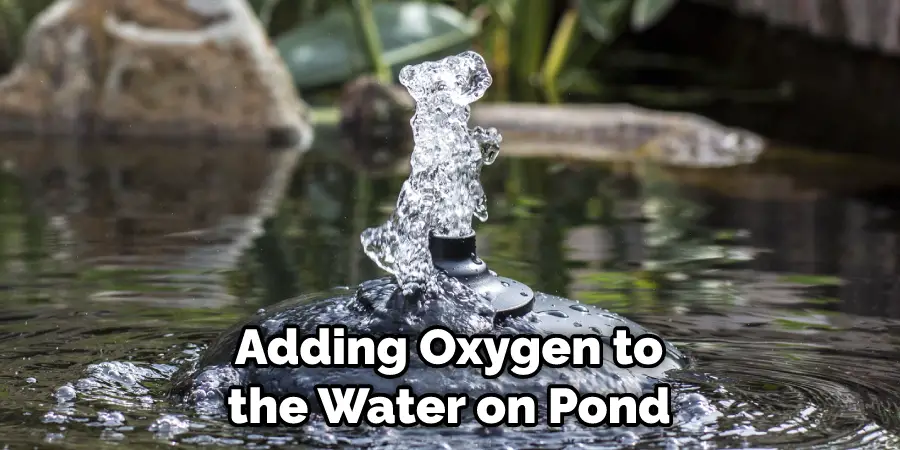
Adding aeration is one of the best ways to clear a muddy pond. Adding oxygen to the water helps significantly in clearing out sediment and increasing circulation throughout the entire pond.
2. Test Water Quality
Before attempting any other steps, it’s important to test the water quality of your pond in order to determine what caused the muddiness in the first place. This can help you determine the best course of action for clearing the muddy water.
3. Add Beneficial Bacteria
Adding beneficial bacteria to your pond will help break down organic matter, improve filtration, and reduce muddiness caused by excess nutrients in the water. Also, beneficial bacteria can help reduce sediment in your pond.
4. Increase Filtration
Installing a better filtration system for your pond is one of the most effective ways to clear a muddy pond. This will allow you to remove excess nutrients and other contaminants from your water, resulting in less muddiness and clearer water.
5. Increase Circulation
Increasing the circulation in your pond by adding a fountain or waterfall can help to clear the muddy water. The increased movement of water will help dislodge sediment and encourage it to settle on the bottom of the pond, resulting in clearer water.
6. Add Plants
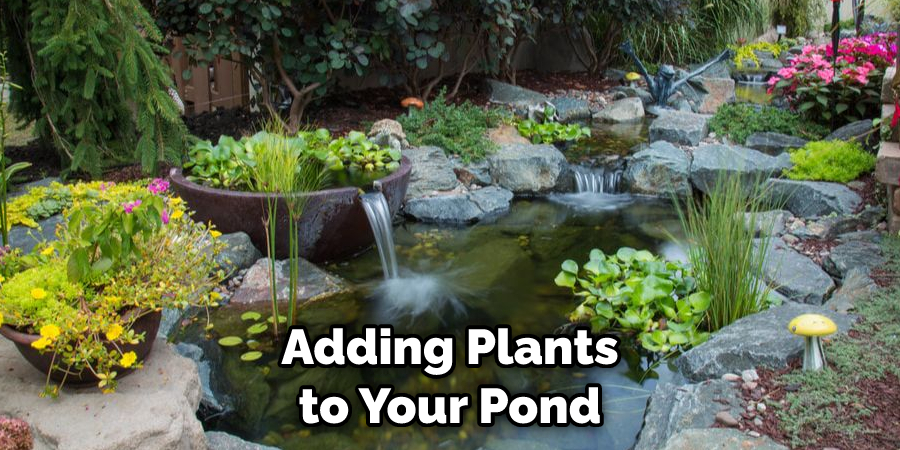
Adding plants to your pond is an effective way to reduce excess nutrients and clear the water. Plants help absorb nutrients from the water, preventing them from becoming muddied.
7. Use Algaecides Carefully
Using algaecides can effectively control algae growth in your pond, but it should be used with care. Applying too much algaecide can cause more harm than good, so be sure to follow the instructions on the label carefully.
8. Use Barley Straw
Using barley straw is a natural and effective way to reduce algae growth in your pond, helping to clear up murky water. It can be placed directly into the pond or suspended in a mesh bag for easy removal when needed.
9. Use Pond Dye
Using pond dye is a simple and effective way to reduce the amount of sunlight entering your pond, which will help to prevent excessive algae growth and reduce muddiness.
10. Change Water Regularly
Regularly changing some of the water in your pond can help reduce sediment and muddiness. Replace about 10-15% of your pond’s water every few weeks to help keep the water clean and clear.
11. Install a Skimmer
Installing a skimmer to your pond can effectively reduce sediment buildup, resulting in clearer water. A skimmer will help remove debris from the surface of the water, preventing it from sinking to the bottom and causing muddiness.
12. Add Rocks or Gravel
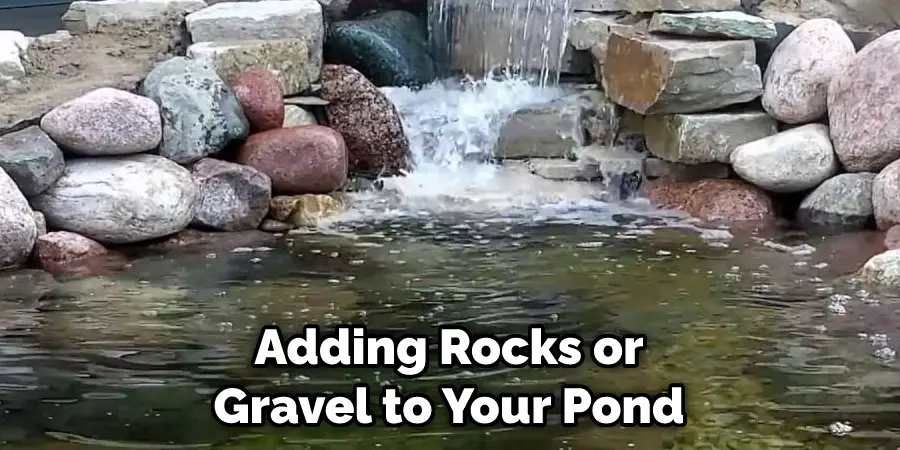
Adding rocks or gravel to your pond can help reduce sedimentation by providing a surface for sediment to settle on. Be sure not to overdo it though; too much sediment at the bottom of your pond can make it difficult for fish to swim.
13. Use Natural Clay
Using natural clay can also be an effective way to reduce sedimentation in your pond. Clay helps to absorb excess nutrients and prevent them from becoming muddied, resulting in clearer water.
14. Reduce Nutrients
Reducing the number of nutrients entering your pond is another effective way to reduce muddiness. This can be done by limiting the amount of fertilizer you use around your pond and avoiding overfeeding your fish.
15. Use a Vacuum
Using a vacuum cleaner designed specifically for ponds effectively removes sediment from the bottom of your pond, resulting in clearer water. But be careful not to disturb the natural balance of your pond too much; some sediment is necessary for healthy fish and plants.
16. Use a Containment Net
Using a containment net to keep leaves, twigs, and other debris out of your pond can help reduce muddiness. The net will capture most of the debris before it has a chance to sink to the bottom and cause sediment buildup.
17. Reduce Shade
Reducing the amount of shade near your pond can also help to reduce algae growth, resulting in clearer water. This can be done by trimming back overhanging trees and removing other sources of shade near your pond.
18. Cover Your Pond
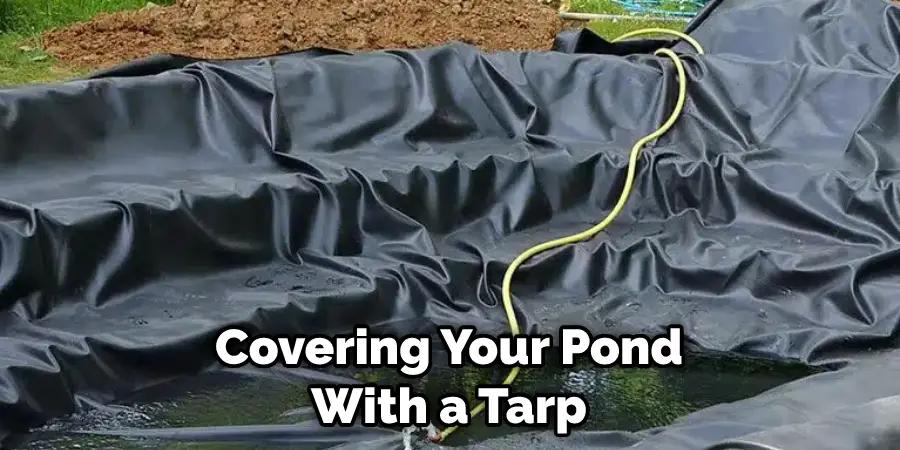
Covering your pond with a tarp or net can also help reduce muddiness by blocking out sunlight and preventing algae growth. Make sure to use a breathable fabric so that the water in your pond can still get oxygen.
Following these steps can help clear a muddy pond and enjoy clean, crystal-clear water again. Taking action now can help prevent further muddiness in the future, so don’t delay! Get started today and enjoy a clean and clear pond again.
Frequently Asked Questions
What Precautions Should Be Taken When Clearing a Muddy Pond?
When tackling the task of clearing a muddy pond, safety should be paramount. Make sure to wear protective clothing such as gloves and long sleeves since the water may contain harmful bacteria or parasites. Avoid digging too deep into the mud, as this could cause damage to the pond’s ecosystem, and be sure to keep any tools you use for the task above water.
Avoid working alone, as flooding can occur during the process, and it is always wise to have someone to spot and help in the event of an emergency. Lastly, take care not to introduce foreign objects or substances into the pond when attempting to clear it, as this could disrupt the delicate balance of its ecosystem.
What Are Some Tips for Clearing a Muddy Pond?
Before attempting to clear your muddy pond, make sure that you fully understand how it functions and what creatures live in it. Once you have an understanding of the environment, begin by skimming away any floating debris that has accumulated on the surface. If the pond is small, you can drain it and shovel out any mud or debris that has settled on the bottom. For larger ponds, use a pond vacuum to suck up solid waste from the bottom of the pond. You may also need to aerate your pond with a water fountain or an oxygen pump in order to improve circulation and clear up the water. Finally, depending on the severity of algae or other pollutants in your pond, you may need to use chemical treatments such as algaecides or other natural solutions.
What Should Be Done After Clearing a Muddy Pond?
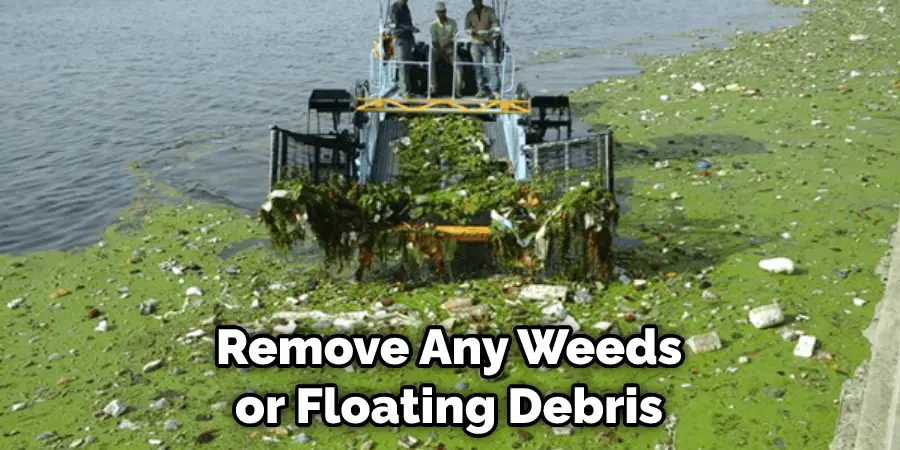
Once your muddy pond has been cleared, it is important to maintain regular maintenance to ensure it stays clear and healthy. Make sure to remove any weeds or floating debris from the surface regularly, as these can lead to further mud accumulation. Additionally, check for signs of disease or parasites in your fish and take appropriate steps if you notice anything amiss. In addition to regular maintenance, consider adding beneficial bacteria to keep the water clean and balanced. Finally, be sure to test your water regularly to ensure the quality remains safe and suitable for your pond’s inhabitants. By following these tips, you can enjoy a clear, healthy, and beautiful pond all year round.
Can I Use Fish to Clear a Muddy Pond?
In some cases, adding fish such as koi or goldfish to your pond may help clear the water. These fish are natural scavengers and will consume algae and other organic matter that has accumulated on the bottom of your pond, thus helping to improve water clarity. However, it is important to note that the addition of these fish may not be enough to clear a severely muddy pond, and other methods, such as aeration or chemical treatments, may also need to be employed. Additionally, adding too many fish to your pond can create an imbalance in the water, so it is important to research the kind of fish you are adding and ensure that their numbers do not exceed what is recommended for your pond. By following these tips, you can enjoy a clear, healthy, and beautiful pond all year round.
How Much Does It Cost to Clear a Muddy Pond?
The cost of clearing a muddy pond depends on the size and condition of the pond, as well as what methods are used. For example, using chemical treatments or adding fish may require additional costs. Generally speaking, the cost of clearing a small pond can range from $100-$200, while larger ponds may cost upwards of $1000 or more. In addition to the clearing process, it is also important to consider ongoing maintenance costs such as regular water testing and removing debris from the surface. Investing in proper care for your pond ensures that it remains clear and beautiful all year round.
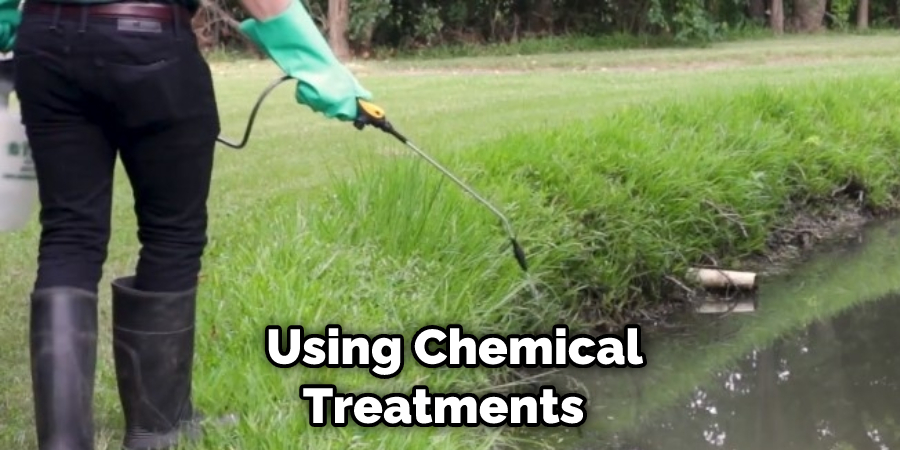
Conclusion
Now you know how to clear a muddy pond safely and effectively. Make sure to take all necessary precautions when tackling this task, as the water can be dangerous if not handled properly. Additionally, use these tips to keep your pond clean and healthy by regularly removing debris, testing your water quality, and adding beneficial bacteria or fish as needed. With proper maintenance, you can enjoy a beautiful pond that is clear and healthy for years to come.
All in all, clearing a muddy pond can be a difficult, time-consuming task. However, this challenge can quickly become a manageable project with the right equipment and understanding of the process. If you are up against persistent mud or other issues, your approach must be patient and persistent. It may take a lot of hard work, but with dedication on your part, you can have a clear and beautiful pond that will inspire you and bring life to your landscape for years to come.
About
Outdoor Fixes is a distinguished figure in the world of Diy design, with a decade of expertise creating innovative and sustainable Diy solutions.
His professional focus lies in merging traditional craftsmanship with modern manufacturing techniques,
fostering designs that are both practical and environmentally conscious. As the author of diy,
outdoorfixes delves into the art and science of outdoorfixes-making, inspiring artisans and industry professionals alike.
Education RMIT University
(Melbourne, Australia) Associate Degree in Design (Outdoor Fixes) Focus on sustainable design, industry-driven projects,
and practical craftsmanship. Gained hands-on experience with traditional and digital manufacturing tools, such as CAD and CNC software.
Nottingham Trent University
(United Kingdom) Bachelor’s in outdoorfixes.com and Product Design (Honors) Specialized in product design with a focus on blending creativity with production
techniques. Participated in industry projects, working with companies like John Lewis and Vitsoe to gain real-world insights.
Publications and Impact
In diy, Outdoor Fixes his insights on indoor design processes, materials, and strategies for efficient production.
His writing bridges the gap between artisan knowledge and modern industry needs, making it a must-read for both budding designers and seasoned professionals.

